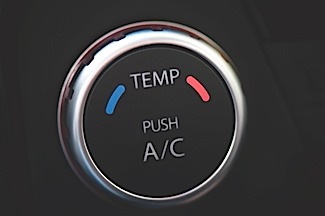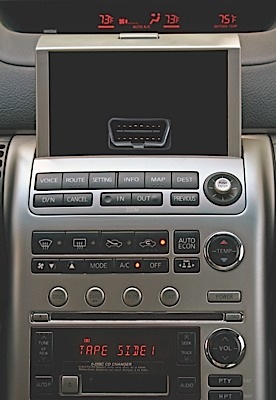Leave it to the manufacturers to take a simple thing like heat and air conditioning and turn it into an electronic jungle of wiring, sensors and computer components. HVAC units have come a long way from when I started in the business. Not that I want to dwell on the past, but it might be a good idea to make sure we understand the basics before diving into the problem of today’s systems. I always feel that if I understand a system fully before doing any repair work, I’m more likely to get it right the first time.

Diagnostic procedures vary from car to car and from year to year. I’m finding more and more these days it’s a lot easier to diagnose the HVAC system with a scanner rather than with a print-out and test light. With the advent of the electronic door motors and the crazy locations on some of these components, I would definitely try to use a scanner when possible. An interesting fact, some aftermarket scanners provide a wealth of information on HVAC systems. Before purchasing a scanner I would ask whether or not it covers HVAC units and which years, which models and how thorough it is. The more information you have before you get your hands dirty, the better.
One of the more common repairs I’ve seen on both domestics and imports is connections. The manufacturers (in my opinion) have gone to the point of making these connections just barely survivable, but not for the length of time that consumers are stretching their vehicles’ useable years on the road.
The other item of concern is the control sensors, i.e., high pressure sensor, low pressure sensor, sun load, etc., for the most part, I wouldn’t drag out that test light and start stabbing the wires. They may look like a sensor, they may have wires like sensors, but there’s a good possibility that it’s not a positive or negative signal at the sensor. In some cases the sensor maybe reading a digital-type signal (waveform voltage) that would be easier to read on a scanner screen instead of that 12V test light. These values are then sent to the PCM to be interpreted and used to determine the actual A/C clutch engagement or door positions. Here again, a scanner is the proper tool of choice, not the test light.

Assuming we don’t have a component failure and that the entire problem is a connection somewhere, let’s say at the blower switch, which in some cases is also the “On” switch for the entire system. If the plastic housing has been melted and the physical “metal” connector is skewed out of place, chances are that no matter how much manipulating you do to “re-fit” the metal tab back into place it’s still going to end up back where it started and your customer will be back at your door with the same problem. I would locate a replacement connector either from the dealer or the local parts store. (I’ve had next to no luck getting a connector from the salvage yards. Most of the connectors that came from the salvage yard are just as bad as the one I already have in the car. But, you might get lucky…)
The advantage of using a scanner to see certain sensor values and door positions also has one extra quality to the diagnostic process: Codes. Codes for the HVAC system are valuable information for you as the tech. However, a code is not the answer, a code is a starting point or a direction for repair. So many times I see vehicles come in with new parts bolted in because the last shop that had it read a code and assumed that meant to replace the part.
A perfect example of this was a 2002 VW Beetle that came in with a brand-new compressor and fan controller on it. There was a code stored for poor compressor performance at idle, which was exactly what it was doing. If the car was at an idle and the A/C was off, rev the engine just slightly and the compressor would turn on and work perfectly. Bring it back to an idle and the compressor would shut back off.
Checking into it a little further, I found the real culprit to be the charging system. At an idle, the alternator couldn’t develop enough output to maintain all the systems in the car. The PCM would shut down the A/C, trying to maintain a voltage level that was acceptable but never got to the point of causing the charge indicator to come on during this whole process. (Cars are getting too smart these days.)
The best thing I can tell you about diagnosing HVAC systems is to consider the year and make of the car, find out whether or not a scanner can code, read values and/or give you some information on the condition of the components before you start changing things. If there isn’t access by way of a scanner, then I would suggest a wiring diagram and a description page that will inform you of how each component works in that given system.
If you keep your cool, I’m sure you can get it diagnosed and repaired before your customer gets too hot.










